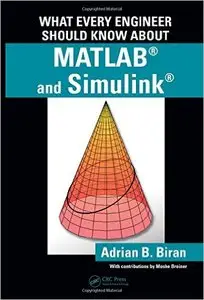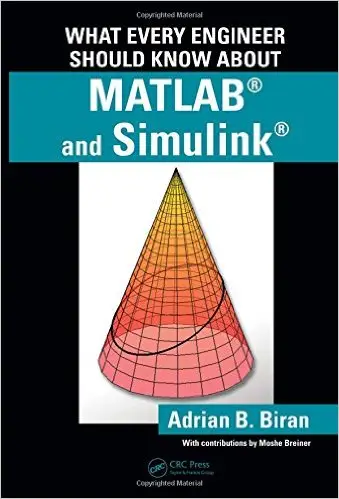Adrian B. Biran, "What Every Engineer Should Know about MATLAB® and Simulink®"
2010 | ISBN-10: 1439810206 | 451 pages | PDF | 28 MB
2010 | ISBN-10: 1439810206 | 451 pages | PDF | 28 MB
MATLAB® can be used to execute many mathematical and engineering calculations, as well as a handheld computer can—if not better. Moreover, like many other computer languages, it can perform tasks that a handheld computer cannot. Compared to other computer languages, MATLAB provides many built-in functions that make learning easier and reduce prototyping time. Simulink® is a toolbox that extends the possibilities of MATLAB by providing a graphical interface for modeling and simulating dynamical processes.
Using examples from mathematics, mechanical and electrical engineering, and control and signal processing, What Every Engineer Should Know About MATLAB® and Simulink® provides an introduction to these two computer environments and examines the advantages and limitations of MATLAB. It first explores the benefits of how to use MATLAB to solve problems and then process and present calculations and experimental results. This book also briefly introduces the reader to more advanced features of the software, such as object-oriented programming (OOP), and it draws the attention to some specialized toolboxes.
Key features of the book include demonstrations of how to:
Visualize the results of calculations in various kinds of graphical representations
Write useful script files and functions for solving specific problems
Avoid disastrous computational errors
Convert calculations into technical reports and insert calculations and graphs into either MS Word or LaTeX
This book illustrates the limitations of the computer, as well as the implications associated with errors that can result from approximations or numerical errors. Using selected examples of computer-aided errors, the author explains that the set of computer numbers is discrete and bounded—a feature that can cause catastrophic errors if not properly taken into account. In conjunction with The Mathworks—marketers of MATLAB and Simulink—a supplementary website is presented to offer access to software implemented in the book and the script files used to produce the figures. This book was written by Adrian B. Biran of Technion – Israel Institute of Technology, with contributions by Moshe Breiner, managing director of SimACon.



